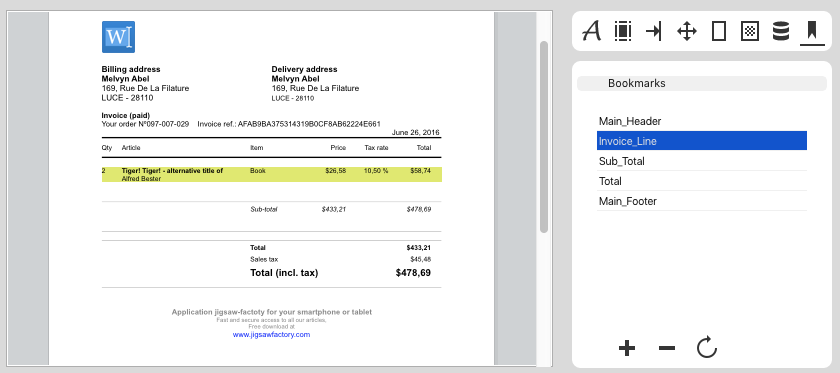One common usage of 4D Write was to create documents automatically, such as invoices, reports, orders, based on templates created or designed by the end user.
4D Write Pro v16 will support this usage with the new concept of bookmarks, that can be used to easily build new documents section by section.
Instead of using many separate documents as in 4D Write, it is now possible to use one complete document. The user selects ranges inside the document (like header line, invoice item, etc.) and gives them a name, i.e. bookmarks them. As a developer, you do not need to identify the range and copy them manually; you simply select document parts by using the named bookmarks.

To ease the dynamic creation of documents by programming, the WP New command has been improved so that you can create a new document from a range. You can then re-inject the created document in another document using the WP INSERT DOCUMENT new command.
It is also possible now to get the total number of pages of a document using WP Get page count as well as inserting a line/section/page break in the document with three different modes (prepend, replace, append) using the WP INSERT BREAK command.
A video illustrating these features can be watched here:
The demo database that has been used for the video above as well as an example demonstrating how to use the new commands are available:
To get all details about new commands and the bookmark concept, please take a look at the 4D Write Pro v16 reference manual:

